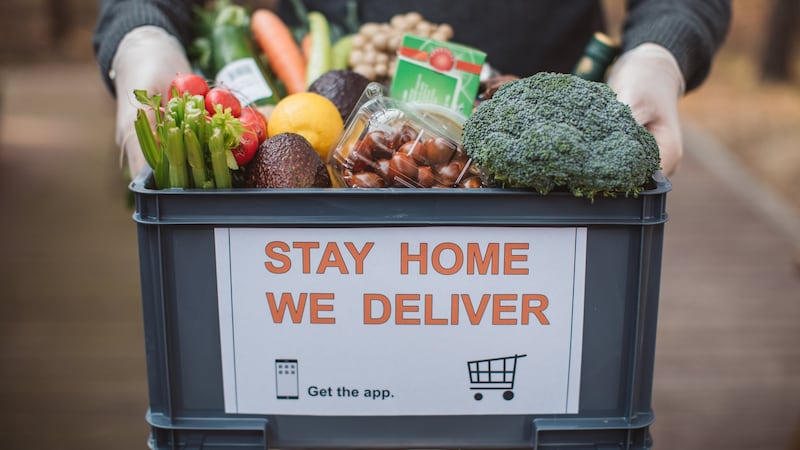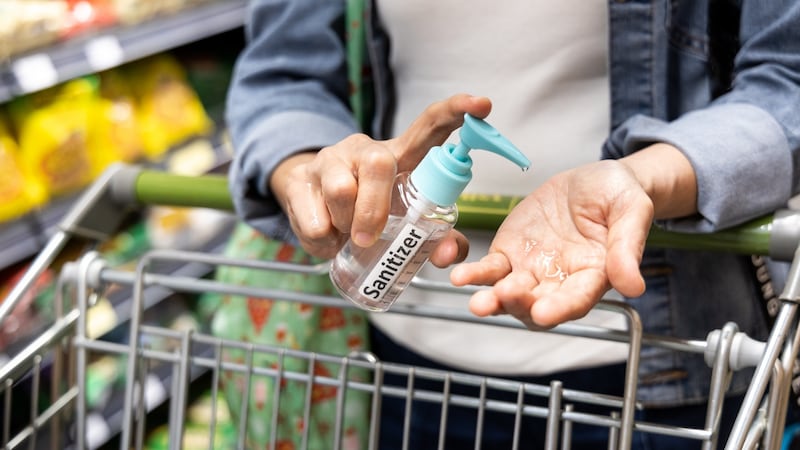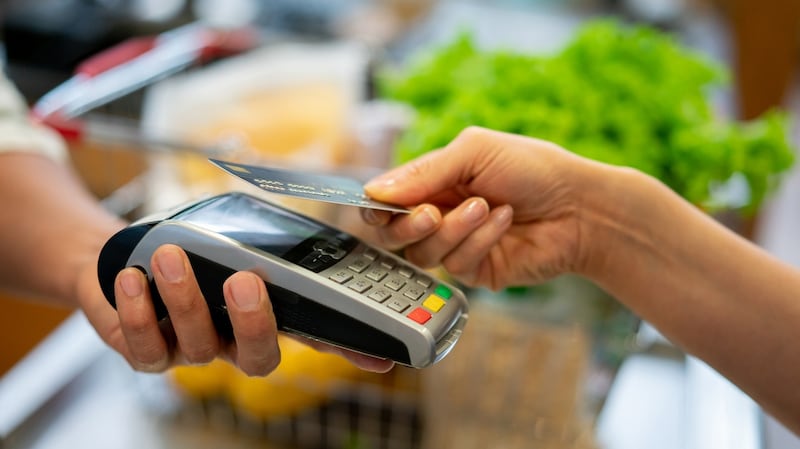For years now, every single time, Pricewatch has written about the immense challenges facing bricks and mortar shops forced to compete with online sellers with dramatically lower overheads and reach, the buzzword mentioned by all retail experts has been “experiential”.
Experiential was as the silver bullet that physical shops could use to slay – or at least slow – their virtual rivals. The message was loud and clear: to survive, all shops would have to give people reasons to come through their doors. They would have to create tactile experiences – manicures, massages, samples and all the rest – so they could engage with shoppers on an emotional and physical level that online retailers could not compete with.
Then Covid-19 happened and the very idea that experiential shopping as it has just been described might help retailers to survive crumbled. In a few short days in March the retail experience in Ireland changed in ways that would have been virtually impossible to imagine as 2020 dawned. Now, if anything, experiential will turn people away rather than bring them in.
Picture this scene. You walk into a department store and are given a buzzer by a staff member wearing a mask and a plastic shield covering their eyes. That buzzer has a countdown clock on it. Once that clock hits 30 minutes, the buzzer does its thing and you are approached by security staff, told your time is up and asked to make your way to the tills or to the door.
That could well be the experiential we have to live with in the days ahead as retailers re-open and commerce re-starts, tentatively.
While times are incredibly hard for all retailers now – with all but those deemed most essential forced to close for more than two months, they are not going to get much easier when they are allowed to re-open.
Imagine trying on clothes that were tried on by lord knows how many people before you? Imagine pulling on a pair of jeans in a changing room, only inches away from other people trying on clothes too. What if one of them coughs? Would you be happy spritzing perfume or aftershave onto yourself in a beauty hall? Would you even consider allowing a stranger apply make-up?
It all seems unimaginable. Which is why retailers are facing challenges the like of which they have never faced before.
David Fitzsimons is the chief executive of umbrella group Retail Excellence and he has been trying to get a sense of what the landscape will look like for his thousands of members when the dust finally starts to settle on the current crisis.

“Home working is here to stay and while it might not be at the same level it is now, there will be a significant number of people working from home into the future,” he says as a starting point. “That is going to lead to a reduction in the footfall in big towns and cities. It might be down by around 20 per cent and those 20 per cent will not be around to buy takeaway coffees and shop in department stores on their lunch breaks.”
While bigger towns will feel the pain of that, he says smaller towns and suburbs might benefit. “There will be more people spending more time and more money in their local communities.”
But more money will go online too, he warns. “There will be a monumental increase in online sales and we are going to see all the tactile experiential stuff disappear at least in the short term.”
Fitzsimons says that there is already a move towards reservation shopping which will see people booking a time slot for a particular shop. That will allow shops manage footfall and reduced queues. But it will take the spontaneity out of the shopping experience.
“Telesales will also be back in a big way, particularly for things that require some expertise on the part of the salespeople,” Fitzsimons suggests. “So if you are buying paint, you might ring the shop and staff will be able to advise you and tell you what materials you need and how much paint you are likely to use. Telesales will be important for people who want to make informed purchases.”
He points out that shopping is “one of the biggest hobbies in the world, it is social, it is tactile “ and the activity as a leisure pursuit is facing an existential crisis. “I think most shops will have signs in their window outlining the maximum number of people allowed in the shop at any time and the recommended dwelling time.”
He says there will be plexiglass at tills and tape on the floors outlining where people should stand.
"We're going to see major changes to the aesthetics of familiar stores, which will be unnerving at first," says . Michael Keelan, co-founder of FlyingElephant.ie, a company which has adapted its event management business to provide sanitisation solutions to Irish businesses as they prepare to reopen.
“People’s habits will change and they’ll be less likely to pop in for a browse or a last minute item but shopping experiences will tend to be more heavily planned than ever before, with less dwell time in store,” he adds.
He suggests that biggest impact to retail shopping will be queues as social distancing continues. “We’re producing various instore options such as floor vinyls, marking tape and outside store options such as roped barriers and metal guards.”
He said sanitisation stations in store would quickly become the new norm and customers will be “expected to use them upon entry, and staff to use them regularly in between customer exchanges.”

According to Fitzsimons, shopping is “the world’s favourite hobby, it is full of experience, tactile, social” but he warns that it “will become overtly functional and less enjoyable. Stores will have capacity limits and some will promote reduce dwell time. Many will actively discourage browsing
“We have all rethought what is important in life. One significant consideration is that we have all come to realise the important of shopping local. In a recent survey EY found that 34 per cent of consumers are willing to pay more to support local businesses!”
He says drive-thru options will become more commonplace and not just for those in search of a burger or a donut. Such options will allow people make an online or phone order. They will get a unique transaction number and when they arrive in the store carpark they give the number. The boot will be opened and the purchases will brought out and the customer will drive off. It could scarcely be more utilitarian and joyless.
In a recent report on the retail sector, PriceWaterhouseCoopers’s Irish division said starkly that Covid-19 “has changed everything”. The report points out that retailers “can only estimate when they will reopen, and how shoppers will return.”
It says the “predictable playbook has been torn up and the industry now faces uncharted waters”.
Irish retail and the wider consumer sector is in “what was, until now, an unthinkable situation . . . the sector has shuttered, with no clear sight of how and when normality will return. There is growing acceptance that when normality does return, it will be a new normal.”

And what will that new normal look like? PWC suggest that Irish consumer “will want to shop again, but in a very different way than before we entered this unprecedented situation… Social distancing needs to be factored into store operations to provide a seamless as possible customer experience.”
New online shopping habits will not be forgotten quickly and value “will become a key driver of customer loyalty as financially constrained shoppers adapt.”
It says that as shoppers return, “they will want to feel safe when in store. Trust, hygiene and social distancing will become key factors in store choice, especially if those measures remain in place for a prolonged period of time. Consumers will start to build this delay into their shopping trips which may become less frequent as they seek to minimise time in public places.
Store layouts may need to change to allow for extra customer space. This will create operational issues “but the key is creating a safe environment for both customers and employees.
“Consumers will want to shop where they feel safest, and trust will play a key role in their decisions. Social distancing will be a factor, but consumers are also likely to engage with products in a different way. Product packaging and traceability are likely to form a bigger role in the buying decision as shoppers look for safe product choices.”
The report also says that with job losses across the retail and services sector, “consumers will face a period of restricted spending. This will change the way they shop. With tighter budgets and the potential impact of social distancing, consumers are likely to seek better value from their weekly grocery shop.
There might be more sales, the report says as retailers who have been closed in recent weeks will be sitting on seasonal stock which needs to be quickly cleared. Then the hard slog will start as companies try and get back to normal, whatever that might look like.

10 ways retail might change
1. Many shops will simply not survive. The grim reality is that many retailers – big and small – survive on wafer thin margins and being forced to shut up shop for at least three months see shops go under. Debenhams was the first big player to fall in Ireland when it announced that it expected a liquidator to be appointed to wind down its Irish business. There will be more. Even when shops can open their doors again, they will likely face higher operating costs as they introduce social distancing measure as well as rents, rates, insurance and wages. On top of that they will continue to be challenged by online retailers who were already undercutting them even before the crisis began.
2. We might all value the people working on shop floors just a little more. Before the crisis, many people did not highly regard those keeping shelves stocked and tills ringing in supermarkets across the country. Without them, however, the lockdown would have been unimaginably worse. Did supermarkets get everything right all the time? No, they did not. Did they keep us fed and stop us panicking when things were tough. Yes, yes they did and we would do well to remember the efforts of all the staff on shop floors once this terrible time passes.
3. The move online will gather pace. For a long time now Pricewatch has been writing about the impact online sellers – many of whom are based overseas and contribute little or nothing to the local economy – have had on shops here. As people feel less comfortable going into shops or less inclined to queue to get into them, the popularity of online trading is only going to grow. According to digital marketing agency Wolfgang Digital, April's online retail revenue in Ireland was almost treble that of pre-Covid levels. March and April saw online retail traffic climb 8 per cent and 60 per cent respectively. The movements in online revenue have been more pronounced, rising 109 per cent in March and then up 187 per cent in April.
4. A bright side to the crisis has seen many independent retailers here launching online operations almost overnight. It is to be hoped that consumers will stick with them and continue to shop local even when the move to shopping in the online space. The Enterprise Ireland Covid-19 Online Retail Scheme covers up to a maximum of 80 per cent of eligible costs on projects from €12,000 up to €50,000.
5. Maybe we will all shop local. When the dust settles many small, independent retailers will be able to pat themselves on the back for staying afloat and imaginatively reinventing how they go about their business. Only two of the big Irish supermarkets offer nationwide delivery and both struggled to cope with demand as the scale off the crisis became apparent. So up stepped local butchers, greengrocers and even pharmacies who came up with all manner of inventive ways to get their products to people who needed them in a timely and safe fashion.
6. In a normal year, consumerism only takes the shortest of breaks – between around 6pm on Christmas Eve and 8am on St Stephen’s Day. On every other day of the year there are shops to be found open and shoppers to be found in them. But maybe the enforced pause will teach people that they don’t need to be shopping all the time.
7 The shift to contactless will be relentless. Already there are shops all over the country that will not accept cash. That is likely to happen on airplanes too. And it will only become more commonplace as retailers and consumers look to reduce their exposure to potential sources of infection. The limit on contactless transactions was increased to €50 in the wake of the crisis while Apple and Google pay have no such limits, although not all banks facilitate phone payments – we're looking at you Bank of Ireland.
8: In the weeks after the retail space starts to reopen there are likely to be a lot more promotions as shops try their best to incentivise people to come back to them. There will also be a need to shift stock bought for a season that never was. All the spring and summer clothes that retailers bought in the hope of a bumper season are going to have to be shifted to make way for the autumn winter ranges
9. Social will be more important than ever. The power of social media to connect with consumers unable to visit stores in person will be pushed to the fore. All retailers anxious to retain and grow their market share will have to be in the space talking and engaging with people in a way that is both real and useful. That is not going to be easy for many companies.
10. More retailers will adopt an “Argos style model”. There will be a counter in the front of the store which customers cannot go beyond. You will have to requests your item and it will be brought to you. One advantage of this – for consumers at any rate – is that it should dramatically reduce the level of spontaneous purchases you make. For retailers – and for many consumers, it should be said, – that will be a distinct disadvantage.









